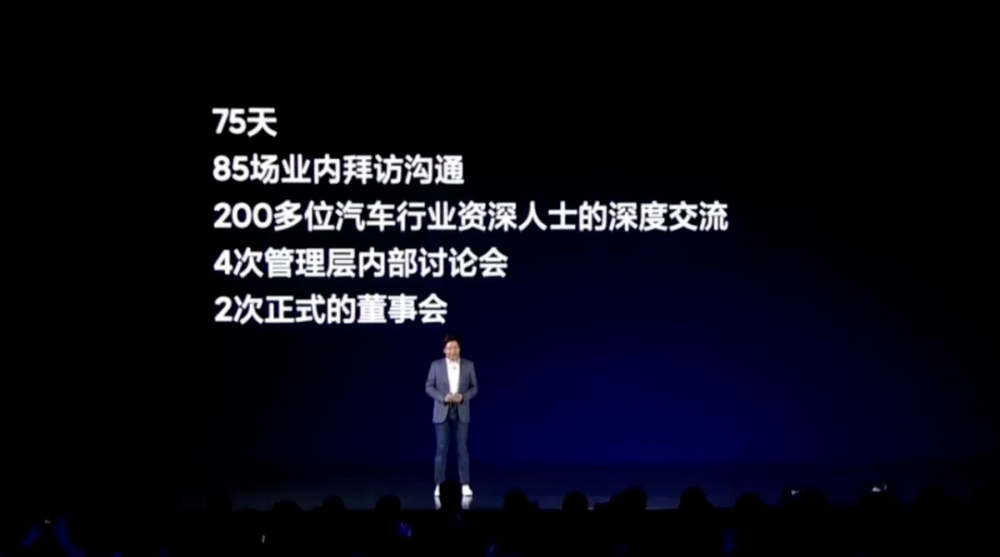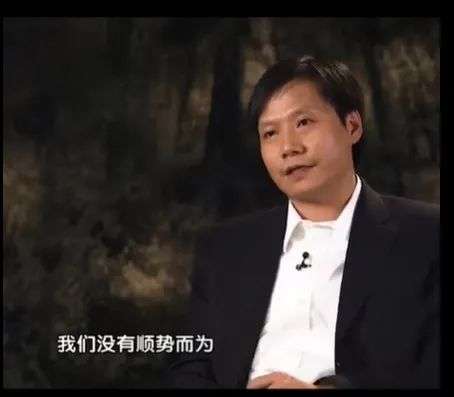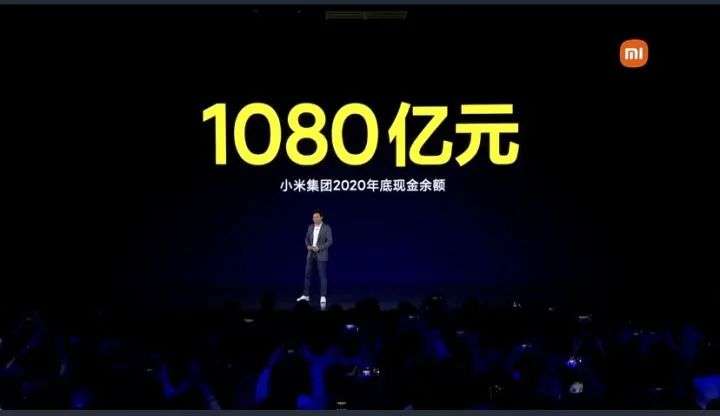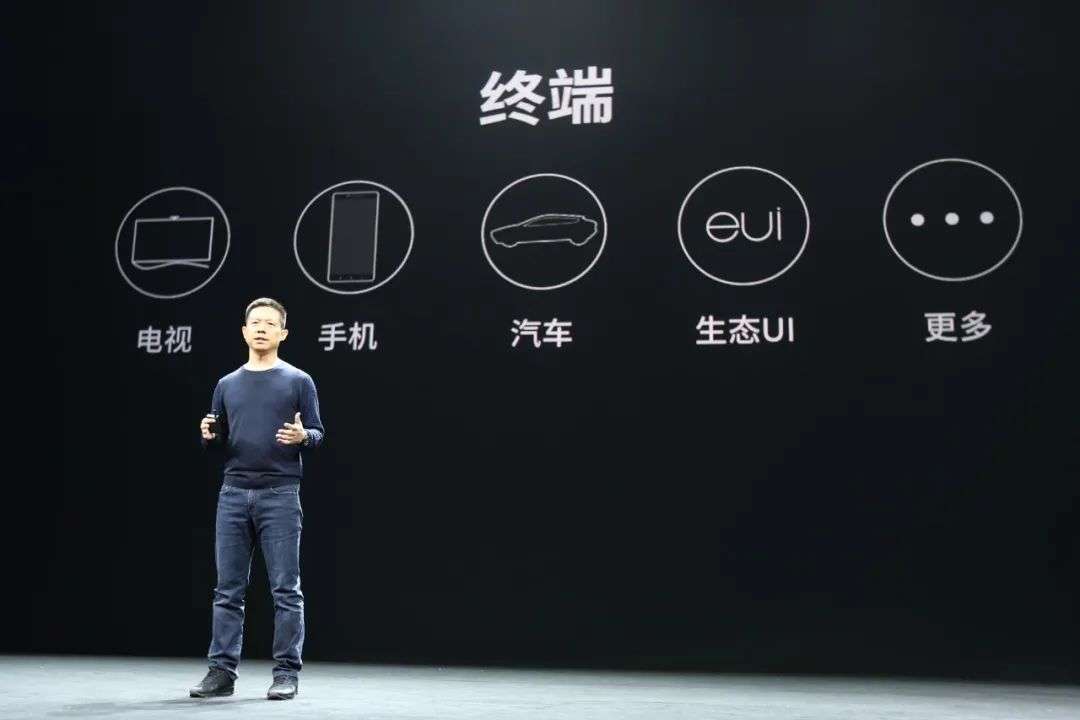The industry needs to be wary of the focus of competition falling into the competition of short-term sales and customer acquisition, marketing battles, and cost-effective competition.
Editor’s note: This article from the micro-channel public number “micro hot Review” (ID: redianweiping), of: Wangxin Xi.
The issue of whether Xiaomi can build a car has been discussed. How difficult is it for Xiaomi to build a car? It’s still unclear. From the hustle and bustle of building cars in the industry, what else do we need to reflect on?
The success of Xiaomi’s car building is actually a matter of opinion, because success itself does not have a certain standard. For a mobile phone manufacturer, a new car can be mass-produced without concerns about quality and safety, which is actually a kind of success.
The current opinion of many people is that unlike Jia Yueting, Lei Jun is relatively reliable in doing things, and being able to make this decision shows that he has already had enough preparation and consideration. Lei Jun also expressed his feelings about the difficulty of the decision to build a car at the press conference-85 industry visits and communications, in-depth exchanges with more than 200 automotive industry veterans, 4 internal management meetings, 2 times in 75 days Formal board of directors.
The reason why Lei Jun wants to invest in building cars may be related to Lei Jun’s own enthusiasm. When Lei Jun talked about his early entrepreneurial experience in the past, he once said that he worked harder than Jack Ma, but he was not as successful as Jack Ma. Why? In the end, Lei Jun concluded by himself that the real problem is that we did not follow the trend.
Lei Jun is a believer in tuyere theory. Judging from past experience, he believes that by following the trend, he has a great chance of success as long as he follows the trend of the future.
This obsession with tuyere and a firm belief in taking advantage of the trend make Lei Jun believe that electric vehicles are the next growth point after smartphones.
The electric vehicle market in the past year has shown strong vitality, and the growth momentum is visible to the naked eye. It is undoubtedly a big wind that cannot be missed. Previously, from Evergrande to Baidu, there have beenThe stock price soared due to the official announcement of the production of cars.
In addition to the favorable domestic policies, many cities have relaxed new energy licenses, heavily subsidized incentives, and encouraged users to purchase new energy vehicles. This kind of favorable tuyere has also promoted the high rise of the stock prices of various car manufacturers.
In the “New Energy Automobile Industry Development Plan (2021-2035)”, it is clearly stated that pure electric vehicles will become the mainstream, fuel cell vehicles will be commercialized, public vehicles will be fully electrified, and highly automated driving intelligent networking Automobiles are becoming popular. By 2025, the sales of new energy vehicles and new vehicles will account for about 25%, and the sales of new intelligent connected vehicles will account for 30%. The highly autonomous intelligent connected vehicles will achieve commercial applications in limited areas and specific scenarios.
Although Xiaomi has no experience in car building, from a domestic perspective, from the R&D and production of key components such as electric motor control, power battery, and vehicle controller to vehicle design and manufacturing, the domestic industrial base has been relatively mature.
From the perspective of the upstream industry chain, from the Ningde era to BYD’s power battery, to Jingjin, Inovance’s electronic control, and BYD’s SiC has achieved the industry’s leading position. It is precisely because of the maturity of the domestic industrial chain that the new car-making forces Xiaopeng, Weilai, and ideals can rely on the industrial chain to develop. This is why even Evergrande has also come to build cars.
In addition, Xiaomi also has a certain accumulation of industry resources, and Xiaomi has also bet a lot on the investment layout of the entire automotive field.
In the past few years, Xiaomi has invested in nearly 10 electric vehicles, including investments in Weilai and Xiaopeng, Suzhou AUX for automotive electronic and electronic control products, Beixing for Lidar, and automotive technology Research on Chemi Technology, etc. In addition, there are more than 800 patents related to Xiaomi cars, although these patents are not “hard-core.”
In general, Xiaomi’s accumulation in the automotive field is still relatively weak, but from some perspectives in the industry, Xiaomi can directly apply the set of supply chain for making mobile phones to the automotive industry chain. Up.
In other words, judging from the current status of the new energy automobile industry, the problem of building cars has been simplified-As long as you have money, you can build cars.
Will consumers buy Xiaomi cars?
If you can build a car as long as you have money, then the next question is whether consumers can buy it.
Although, TeslaNew car companies such as Weilai, Weilai, Ideal and Xiaopeng have already educate the market, but cars are different from mobile phones after all. People may spend several years of savings in order to own a car, with a long use cycle and high decision-making costs. Consumers buying cars are affected by many factors such as brand premiums, prices, and product performance, quality control and safety.
Consumers’ pursuit of car brands and compulsions is no less than that of mobile phones. The cost-effective method of making Xiaomi mobile phones actually taught Lei Jun some lessons.
Lei Jun once said: “Xiaomi wants to solve the problem of domestic products being looked down upon. Everyone thinks that Xiaomi is still in the low-end, and I am quite depressed.” From Xiaomi’s efforts to hit the high-end market over the years, we can see Lei Jun’s determination to decouple the brand from the words “low-end, cost-effective, and diaosi”.
Therefore, when Xiaomi builds cars, it is impossible to follow the positioning of Xiaomi mobile phones, and it is more likely to target the mid-to-high-end. After all, judging from Lei Jun’s statement that he will invest 10 billion US dollars in 10 years, and the first 10 billion yuan, he does not want to play the low-end positioning card.
With the rising cost of raw materials in the entire automotive industry, the future trend of intelligent electric vehicles, and the standard equipment such as smart driving, interconnected cockpits, and human-computer interaction, the cost of building cars is also getting higher and higher.
But the question is, whether the mid-to-high-end positioning can be sold is still unknown. In this field, from the public’s ridicule and expectation of Xiaomi’s “young people’s first car, which only sells 19,999” yuan, Xiaomi’s future The pricing may be difficult.
If you don’t take the cost-effective route, then Xiaomi needs to invest more research and development on automotive products to raise its brand premium, and Xiaomi needs to take into account the two industries of automobiles and mobile phones.
For Xiaomi, it is difficult for Xiaomi to rely solely on its mobile phone business to support a substantial increase in Xiaomi’s share price. Xiaomi needs new business support as a driving force for the stock price. However, after entering the automotive industry, both major businesses need R&D investment Under the circumstances, Xiaomi’s technology research and development dilemma may still be difficult to alleviate.
Look at the safety issues in the automotive industry again.
When mobile phone manufacturers swarm into the automotive industry to build cars, they need to be wary of whether the safety of automotive products in the entire industry will be weakened, leading to frequent product quality control problems.
Automobile products are strictly different from mobile phone products. Cars take quality control, quality, durability and safety as the first priority, and mobile phones take product innovation and user experience as the first priority.
One reason for the lack of core in the automotive industry lies in the coreFilm manufacturing has a very long lead time. The design verification cycle of a chip is very long, usually about one year. Automobile-related chips need to comply with strict safety regulations, and the production chain of chips is very long, involving many links and materials.
As a complex combination of software and hardware, smart electric vehicles have higher technical requirements and chip requirements than traditional cars, not to mention higher-level safety standards than consumer electronic products such as mobile phones. .
Because the quality of mobile phone products affects the user experience, and the safety of automobile quality control is related to the safety of human life.
Some netizens said that if you use Xiaomi’s quality control to get small household appliances, if the quality is poor, it is easy to break, and under the premise of cost-effectiveness, the user’s tolerance is high. If the rigorous degree of quality control of the car is not up to the standard, The consequences could be disastrous.
Therefore, this is where Lei Jun and Xiaomi need to be cautious when building cars, because once a car product has a safety accident, the user’s tolerance is very low, which often directly leads to the collapse of the entire brand’s reputation and trust value.
Again, it is the pricing issue. In the minds of users, Xiaomi is synonymous with cost-effectiveness, and Lei Jun said that many rice noodles also hope that Xiaomi will build cars. But users’ expectations for Xiaomi cars are destructive pricing, that is, they still follow cost-effective pricing, and tend to be mid-to-high-end configurations.
But cars are not mobile phones. In the context of automobiles lacking cores and rising raw material prices, it is not easy to have both cost-effective prices and high-end configurations, and retain profit margins.
Building a car is undoubtedly a gamble for Lei Jun. Lei Jun said that there are 100 reasons to be an electric car during the day, and 100 reasons not to do it at night, but in the end he is willing to “gamble all of his Achievements and honors” shows the great determination of Lei Jun.
In the eyes of many people, Xiaomi has a wider user base and a more mature and well-known brand advantage compared to new car-making forces such as Weilai, Xiaopeng, and Ideal.
But in fact, Xiaomi’s brand awareness in the mobile phone industry may be a negative asset for its car manufacturing.
We know that Gree has always insisted on making mobile phones based on the demand for diversified market increments. From 2015 to now, Gree has never given up its mobile phone business, but Gree mobile phones have never improved.
There are certain similarities between Gree mobile phones and Xiaomi cars. First of all, Gree entered the mobile phone market late. Although it is not too late for Xiaomi to enter the new energy car market, the current overall market pattern is relatively stable. , From Tesla to BYD and other traditional manufacturers to new car manufacturers have accumulated a certain amount of mass production, technology, products, supply chain and other levels. Xiaomi is starting from scratch.
Dong Mingzhu, who made mobile phones in the past, firmly believesGree can make good mobile phones, but Gree lacks bargaining power at the level of the mobile phone supply chain, and has always lacked independent control and breakthrough power at the level of mobile phone software and hardware technology innovation. As a layman in the mobile phone field, its image is gradually solidified in the minds of users Brand premium is difficult to be recognized, and mobile phones cannot be sold.
In the entire automotive industry chain, Xiaomi’s ability to control core technology and supply chain parts, vehicle production, design and many other aspects is missing. Xiaomi is relatively mature. In the market, how to break the image of a car layman from the beginning is critical to the establishment of the first impression of its car brand.
We know that Gree has a too strong home appliance gene, which is a negative asset for the development of mobile phone business. Users lack trust in the quality, software and hardware performance and experience of mobile phone products “independently produced” by home appliance manufacturers.< strong>The genetic attributes of home appliances do not match the brand tonality of mobile phone products.
Xiaomi’s brand impression in the field of mobile phones has been deeply ingrained. This is similar to the problem of Gree making mobile phones. Consumers have bound Gree’s brand with air-conditioning products. Gree=The awareness of air-conditioning is too high, and users are very It is difficult to generate brand recognition for its mobile phone products.
The same is true for Xiaomi. Its Xiaomi brand is too deeply tied to Xiaomi’s mobile phone products, which is actually an obstacle to becoming a car brand.
Therefore, for Xiaomi, to build a car is actually to de-Miify the brand, remove the burden, and go on the road lightly.
Although Xiaomi said that it will establish a wholly-owned subsidiary, the gameplay of the hardware ecological chain-Xiaomi provides industrial design and channels for ecological chain companies, realizes brand binding through investment in shares, and opens up hardware products through mobile software- This model is difficult to simply apply to automotive products.
Jia Yueting’s past experience of stepping on the pit has clarified a fact: Mobile phones, PCs, tablets and other products can form an interoperable hardware ecological chain, because they are products under the same system, but the automotive software and hardware supply chain is Mobile phones are very different, with different product development and supply chain systems.
The so-called Internet audio-visual entertainment content and smart hardware are the icing on the cake, but the research and development, manufacturing, and integration of the car itself are the most complicated among the mass-produced civilian products.
Moreover, there is a lack of synergy between cars, mobile phones and smart hardware products. What Jia Yueting proposed at the time was a complete ecosystem of “platform + content + terminal + application”. Screen attention.
But in the end, LeTV’s car manufacturing business could not make up for Jia Yueting’s “ecological opposition”.Block territory, instead, because of the large blood transfusion of car building, the “ecological anti” model was directly dragged down. This is what Xiaomi deserves to be wary of.
In addition, against Weilai and Xiaopeng, Weilai, which was established in 2014, has raised more than 9.6 billion U.S. dollars, of which 6.11 billion U.S. dollars has been raised in 2020 alone; Xiaopeng’s total financing has reached 7.7 billion U.S. dollars; Xiaomi How long the tens of billions of dollars of funds can be burned, and whether it is necessary to plan the future financing rhythm in advance, is also Lei Jun needs to think in advance.
New carmakers have entered the game. What else do we need to reflect on?
In the case that Evergrande and Xiaomi have already entered the production of cars, Bitauto has also announced that it will build cars, and issued an article saying: “Many Internet companies are building cars, and Bitauto never drops.” A picture of a concept car with the “easy car” LOGO. At present, there may be only a lot more players eager to enter the game in the future.
But in the new energy automobile industry, can you really build a car if you have money? This is obviously worthy of reflection.
On the one hand, the impetuous atmosphere of getting together and chasing the wind is good and bad for the entire automotive industry. Fortunately, the entry of a large number of capital players has a certain catalytic effect on driving competition, upgrading and innovation in the entire automotive industry.
But what needs to be vigilant is that it will also bring negative effects to the entire electric vehicle industry. The industry needs to be vigilant about the focus of competition falling into the competition for short-term sales, marketing, and cost-effective competition, focusing on the short-term The output effect of input leads to the lack of precipitation and improvement and long-term investment in the research and development of key technologies in the entire industry chain.
We see that the current “core shortage” problem in the global automotive industry has intensified. Many car companies around the world have announced that automotive production will decline due to semiconductor shortages.
Domestic BYD and CATL have achieved world-class in the field of electric vehicle batteries, but in the entire automotive chip industry, it is still the domestic supply chain.Shortcomings require more capital injection.
With the popularization of new energy vehicles, as power devices that can improve the electrification performance of vehicles, automotive microcontroller (MCU) and sensor chip capabilities have become an important component of the core competitiveness of auto companies.
Data shows that the purchase of chips by companies in the field of new energy vehicles will double that of fuel vehicles, and the number of power devices alone has increased by more than 100%. According to data from Sohu Automotive Research Office, in 2019, 63% of the global automotive chip market share is in the hands of European and American companies.
“China’s New Energy Vehicle Supply Chain White Paper 2020” also shows that in China’s 28 million car market each year, China’s automotive semiconductor production value accounts for less than 5% of the world, and the import volume of some key components is 80%-90%.
New energy vehicles are an opportunity for overtaking in a curve, but there is not much time window left for the development of domestic automobile chips.
The car made by Xiaomi means that the car needs to rely on the profit and revenue of the mobile phone for blood transfusion. This is a very big test for Xiaomi’s cash flow. Although Xiaomi is not bad for money, it is too expensive to build a car, and it is under continuous pressure to burn money. , It is very likely to follow the mobile marketing gameplay and the Internet gameplay.
From a optimistic voice, the mainstream view in the industry is that it is easier to build cars now than before, and Xiaomi is looking for a foundry (the current news also points to Xiaomi adopting the foundry model.) Use other people’s production lines, car-making experience, The logistics and warehousing are checked by foundries, electric vehicle suppliers provide materials, and domestic and foreign chip manufacturers provide chips. What Xiaomi has to do is to integrate.
From this perspective, money can indeed build cars. Among the new players who enter the game, it is probably the light model of OEM + integrated car building, not trying to control upstream dominance in key technical areas.
If this kind of gameplay becomes a normal state, it will bring a certain anxiety to the industry. This kind of anxiety is that everything in the automotive industry is strategically oriented to short-term sales, and through sales competition to create topical volume and increase The stock price attracts capital.
As capital is chasing fast in and out, the funds that should have flowed into the automotive supply chain industry to solve the development of chips, batteries, autonomous driving, and key components may be less. Playing into a price war requires the entire industry to be vigilant.
However, in the face of the lack of core chip technology in the entire automotive industry, many key componentsRestrictions that can only be imported from abroad (The development of key components and main chip production in the fields of new energy three-electric system, chassis electronic control, automatic driving and other fields are monopolized by foreign companies.) The automobile industry and the mobile phone industry are madly competing for a few such as Samsung and TSMC. It seems that not many players really care about the reality of chip production capacity of several major manufacturers.
How to break the shackles and hidden worries of the “jammed neck” and establish an independent and controllable supply chain system should be the new car manufacturers to think deeply about the layout.
From the current point of view, the development of my country’s new energy vehicles still lags behind foreign developed countries, and breakthroughs are yet to be made in many key areas.
New energy vehicles are the outlet and an opportunity for overtaking in a difficult curve in the domestic auto industry. Lei Jun’s entrepreneurial sentiment is very provocative. Under the hustle and bustle of making cars with money, it is easy for people to ignore the weaknesses and hidden worries of the industry.
At the moment when mobile phone manufacturers gather to build cars, how to avoid the history of the mobile phone industry being stuck in the chip field repeats itself in the automotive industry, it is still worthy of the entire industry to reflect on it.






